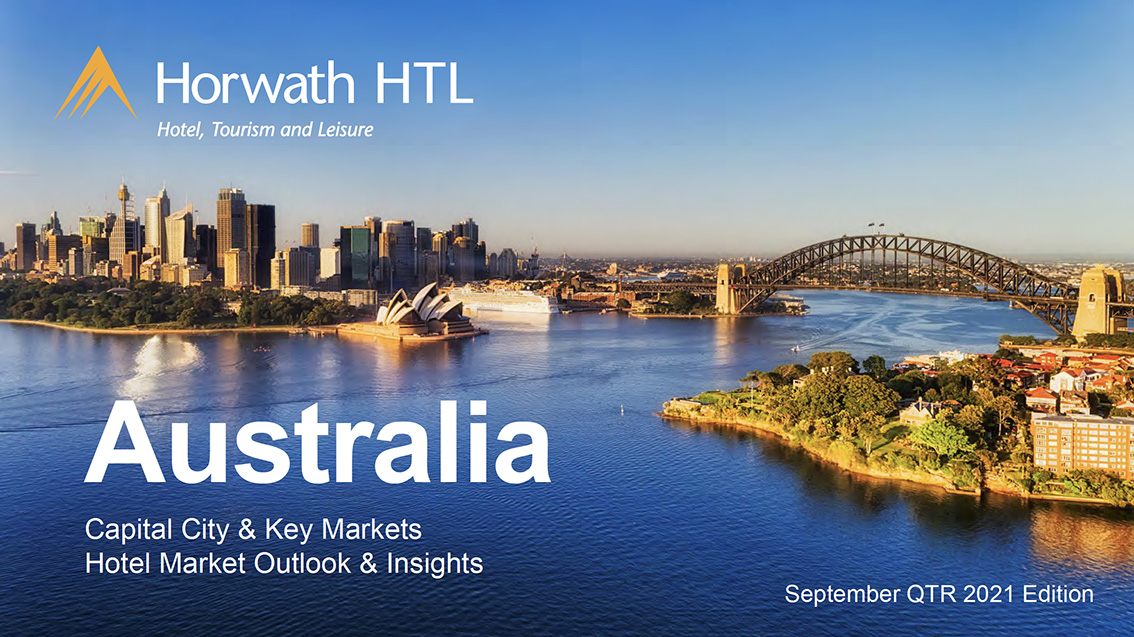
Report
Australia Key City Hotel Market Outlook
Market Recovery and Performance:
The Australian economy faced significant challenges in September 2021 due to widespread lockdowns affecting more than half of the population, which led to decreased consumer and business confidence. Despite these setbacks, a strong recovery is anticipated throughout 2022 as vaccination rates increase and restrictions ease.
Economic and Tourism Outlook by State
- New South Wales (NSW) and Victoria (VIC) are projected to have the slowest recovery due to the severe impact of the Delta outbreaks. Pent-up demand in Victoria is not expected to compensate for the prolonged lockdown periods.
- Queensland (QLD), South Australia (SA), and Western Australia (WA) show more resilience. WA’s economy benefits from minimal COVID-19 disruptions and high iron ore prices.
- Australian Capital Territory (ACT) is expected to recover robustly due to high vaccination rates and increased government spending.
International and Domestic Tourism
- The return of international tourism is delayed, with expectations now set for 2024 or later. However, there is strong pent-up demand that will drive recovery once borders fully reopen.
- Domestic tourism is forecast to return to pre-pandemic levels by 2022-23, with a full recovery and surpassing of previous peaks expected by 2023-24. Victoria and NSW will experience a slower return due to extended lockdowns.
Hotel Market Performance
- Revenue per Available Room (RevPAR) saw significant variance across key markets:
- Brisbane: 39.6% increase, reaching 73.8% of 2019 levels.
- Canberra: 21.3% increase, reaching 60.0% of 2019 levels.
- Darwin: 157.9% increase, surpassing 2019 levels at 116.5%.
- Gold Coast: 46.7% increase, reaching 84.3% of 2019 levels.
- Hobart: 52.8% increase, reaching 79.5% of 2019 levels.
- Melbourne: -19.5% decrease, reaching 38.4% of 2019 levels.
- Newcastle: 29.3% increase, reaching 78.7% of 2019 levels.
- Perth: 30.6% increase, reaching 81.8% of 2019 levels.
- Sunshine Coast: 56.1% increase, reaching 107.1% of 2019 levels.
- Sydney: -7.6% decrease, reaching 40.6% of 2019 levels.
Supply Pipeline
- Sydney: 3.4% compound annual growth rate (CAAGR) from 2021 to 2025, with significant additions in upscale and luxury segments.
- Melbourne: 5.7% CAAGR, with notable growth in upscale and upper upscale segments.
- Brisbane: 1.2% CAAGR, focusing on luxury segments.
- Perth: 2.5% CAAGR, with ongoing developments in upscale and luxury segments.
- Adelaide: 4.9% CAAGR, focusing on upscale and luxury segments.
- Canberra: 1.9% CAAGR, focusing on upscale segments.
- Hobart: 1.7% CAAGR, with developments in upscale segments.
- Gold Coast: 1.3% CAAGR, focusing on luxury and upscale segments.
- Sunshine Coast: 1.9% CAAGR, with a mix of midscale and upscale developments.
- Newcastle: 1.9% CAAGR, focusing on luxury and upscale segments.
Key Insights
- The recovery of the hotel market is heavily reliant on the resurgence of domestic travel, which has already shown strong performance, particularly in leisure-focused regions such as the Gold Coast and Sunshine Coast.
- Investment trends indicate a preference for high-margin accommodation types, including luxury hotels and serviced apartments.
The outlook for Australia’s hotel market remains positive, with a strong recovery anticipated in 2022 and beyond. Key challenges include managing new supply and adapting to changes in travel behaviour due to ongoing pandemic-related uncertainties.
Download the report
For detailed charts, graphs, and further analysis, download the full report here




